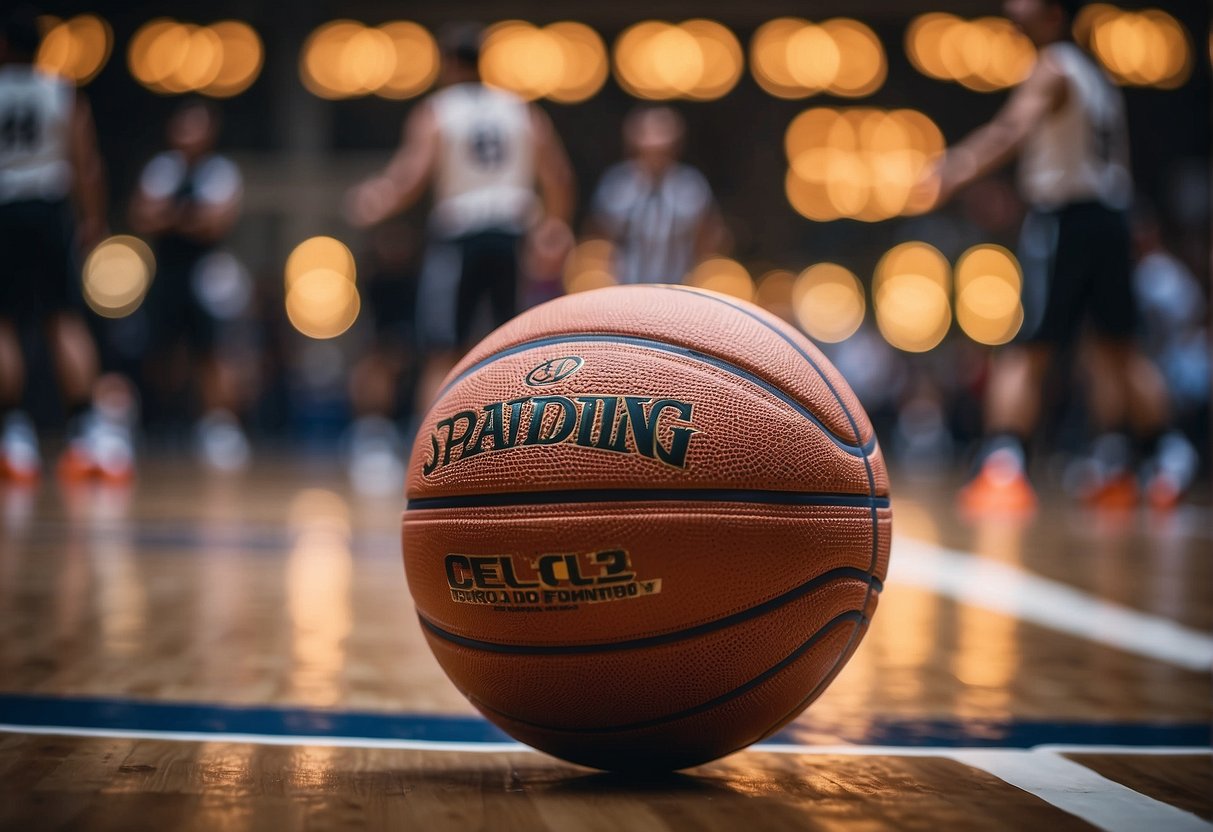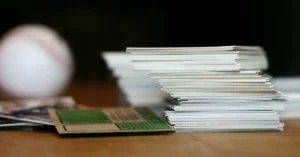Delve into the anatomy of basketballs through my specialist examination: what constitutes a basketball? Uncover the components and artisanship that define these emblematic sports spheres.
What Are Basketballs Made Of?
Historical Evolution
James Naismith, the inventor of basketball, initially made do with a soccer ball, which was readily available in the late 19th century. Early basketballs were simply leather covers stitched over a rubber bladder.
Leather, highly prized for its durability and feel, set the standard for professional-quality balls. Over time, the quest for better performance and versatility led to the introduction of synthetic materials offering enhanced grip and moisture resistance.
Basketball Construction Basics
A basketball is composed of a spherical rubber bladder that holds air, providing the perfect balance of bounciness and resilience. This bladder is enclosed in a network of fibers—either nylon or polyester—before being covered with the outer material.
Leather basketballs, preferred for indoor play, ensure a softer touch and excellent grip. Meanwhile, outdoor basketballs often use durable synthetic leather or rubber. The material choice affects the ball’s grip, durability, and overall performance on different playing surfaces.
Manufacturing Process and Quality Control

Raw Materials and Preparation
Selecting the suitable materials is the foundation of a high-quality basketball. Manufacturers begin by choosing high-quality leather for indoor balls or durable synthetic composites for outdoor use. The materials undergo preparation, which includes cleaning, smoothing, and sometimes dyeing, to create a consistent surface for play.
Crafting and Assembly
Your basketball’s journey continues as these materials are skillfully crafted and assembled. Panels are cut from the prepared materials and then stitched or glued around a rubber bladder. This bladder allows your basketball to hold air and maintain adequate pressure. The precise glue application during the panel assembly is critical to prevent defects and ensure longevity.
Testing and Inspection
After the basketballs are assembled, they undergo rigorous testing to check their bounce, spherical shape, and air retention. Inspection for defects occurs at this stage, where balls that do not meet the established quality standards are removed from the production line. Quality control is continuous, aiming to ensure that every basketball you play with meets professional and casual gameplay criteria.
Basketball Design Features

Size and Weight Standards
NBA Official Size: Your basketball should meet the NBA’s regulation size and weight if that’s the play level you’re aiming for. Specifically, the ball should have a circumference of about 29.5 inches and weigh about 22 ounces.
Other Levels: On the other hand, you’ll find slightly smaller and lighter balls for high school and junior play. Women’s basketballs also differ, typically measuring 28.5 inches in circumference.
Surface Texture and Grip
Material: The ideal basketball offers a reliable grip even when sweating during a heated game. This grip can be attributed to the pebbled surface texture, with traditional leather being the choice for the NBA. Still, other materials like synthetic rubber and composite leathers are also popular.
Panels: Each basketball contains panels, often in an eight-panel configuration, stitched together to provide a seamless feel. The curved triangles of the panels themselves are specially designed for an optimized grip.
Aesthetic Elements
Color and Brightness: Basketball aesthetics aren’t just for show. The traditional orange hue with black ribs isn’t random—it ensures high visibility for players and spectators.
Markings and Artwork: The decals, markings, and artwork on a basketball aren’t just there for brand identification; they can also be critical for identifying ball rotation and assessing the precision of spins and shots. NBA balls, for example, include the iconic NBA logo.
Durability and Performance

Material Layers and Composition
The composite leather used in basketball exteriors is not only about giving you a comfortable grip; it’s pivotal for durability. Typically, several layers of materials like nylon or polyester below the outer layer add strength and structure. This layered composition helps the ball withstand rough play and harsh surfaces, preventing it from wearing out quickly.
Air Retention and Bounce
A rubber bladder encapsulates the air, ensuring the ball remains inflated. The quality of this bladder impacts air retention, which is key to a basketball’s performance. A good bladder means your ball won’t deflate unexpectedly, ruining your game.
Proper air retention leads to optimal bounce, and you can assess this with a standard bounce test, where you drop the ball from a height of 180cm and observe the bounce height, generally expected to be about 120cm to 140cm back up.
Maintenance and Care
- Regularly check your basketball’s air pressure, which should align with the manufacturer’s recommendations.
- Clean the surface with a damp cloth after playing, especially if it’s a composite leather ball.
- Store your ball in a cool, dry place away from direct sunlight to prevent the material from degrading.
Basketballs in Professional Leagues

When you’re tuning into a game or hitting the court yourself, it’s fascinating to understand the craftsmanship behind the basketballs used in professional leagues. Their design and materials have a profound influence on the play of your favorite athletes in the global basketball market.
Official Game Balls of the NBA
The NBA has strict specifications for its official game balls, ensuring consistency and performance at the highest level. You’ll find these basketballs made of top-quality genuine leather provided by the Horween Leather Company, a historic supplier in Chicago. These leather balls offer a superior grip and feel that professional players rely upon during games.
Regulations for Other Competitions
Contrary to the NBA’s leather preference, other professional leagues around the globe, particularly in countries like China and India, may opt for composite materials. These materials can enhance durability and are suited for indoor and outdoor play, making them versatile for varying court conditions.
Global Impact on Production
The production of basketballs for professional leagues has a significant global impact. The US remains a central figure, especially through the NBA’s reach and influence. However, as basketball’s popularity grows, countries like China and India are becoming key players in manufacturing and consumption, giving rise to a diverse array of materials and designs catering to local market needs.
Consumer Considerations and Purchasing

When you’re hunting for a new basketball, keeping an eye on material quality, price, and ethical manufacturing practices will ensure you make a smart purchase. Whether you’re a player at the high school level or just looking for casual play, the following considerations will help you choose the basketball that suits your needs and values.
Choosing the Right Basketball
- Material: The feel and performance of a basketball intensely depend on its material. Leather basketballs, endorsed for their premium grip and feel, are the top choice for professional indoor play. Conversely, composite leather or synthetic rubber are practical for indoor and outdoor use and are often more affordable.
- Size: Make sure to pick the right ball size. Regulation size is 29.5 inches for men’s high school and professional basketball, while women’s and junior basketballs are slightly smaller in circumference.
Pricing and Availability
- Budget: Basketballs vary in price from affordable synthetic options to more pricey genuine leather balls. You can find basketsballs typically range between $15 to over $100.
- Retail Availability: Basketballs are widely available at sporting goods retailers. During off-season or sales, you might snatch a good deal. Keep in mind that high school players may require specific models for team play, which could affect cost and availability.
Sustainable and Safe Options
- Eco-Friendly Choices: For those environmentally conscious, search for brands that prioritize sustainable practices. Some brands offer basketballs made from recycled materials, ensuring a lower environmental impact.
- Safety: Whether you’re a seasoned player or just starting, safe play is key. Choose basketballs with good grip and durability to prevent accidents and ensure a long, safe play life.
FAQ
What are NBA basketballs made of?
NBA basketballs are primarily made of leather or composite materials. Traditional NBA basketballs are made of genuine leather, while modern basketballs may be made of synthetic materials such as composite leather or rubber compounds.
Are NBA balls rubber or leather?
NBA basketballs can be made of both rubber and leather, depending on the specific type of basketball and manufacturer. Traditional NBA game balls are often made of genuine leather, while practice or indoor/outdoor basketballs may be made of rubber or composite materials.
Are basketballs made from cow leather?
Traditionally, basketballs were made from cowhide leather, specifically from cattle hides. However, modern basketball manufacturing may also use synthetic materials or composite leather for construction. While some basketballs may still be made from genuine cow leather, many are made today from synthetic materials for consistency, durability, and performance.
If you enjoyed reading about the topic: What Are Basketballs Made Of, leave a comment and stay updated on Pinterest for more exciting basketball news.
Leave me a comment and make sure to also check out How to Meet NBA Players Before Game.





